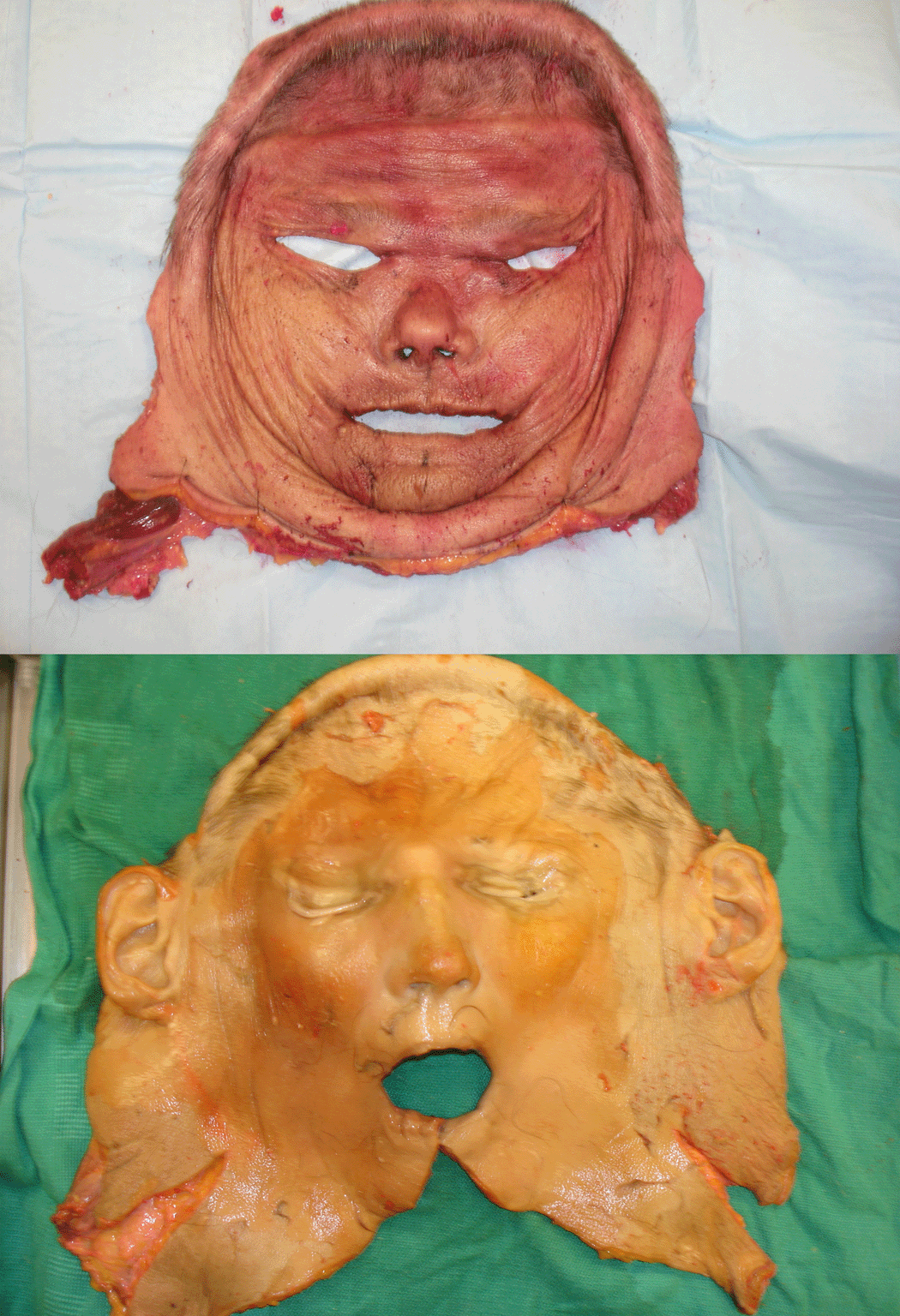Monday, October 9, 2006 - 11:30 AM
10684
Technical Aspects of Face Transplantation: Two Options for Total Face Harvesting
Background: Acquired facial deformity can result from trauma, burns, and tumor resection. Conventional techniques such as skin grafts, local flaps, free flaps, tissue expansion, and prosthetic reconstruction provide satisfactory outcomes in most patients in need of facial reconstruction. However, final outcomes remain unsatisfactory in a number of cases, both from a functional and an aesthetic standpoint. Facial transplantation may become a theoretically viable option in the treatment of patients with extensive facial disfigurement. The challenges associated with immunosuppression and the ethical issues surrounding face transplantation are substantial. One of the most fundamental technical questions that remains to be answered before the first total face transplant can be performed is how a facial allograft would be harvested and what tissues it would include. Two novel face harvesting techniques are presented.
Methods: The first technique harvests the skin and soft tissue of the face by dissecting in the subgaleal, sub-SMAS, subplatysmal planes. The second technique harvests the entire soft tissue and bony structure of the face by dissecting in a subperiosteal plane and harvesting the bones of the midface by performing a Le Fort III osteotomy. Each technique was performed on fresh human cadavers that had been perfused with latex.
Results: In each technique, the face was harvested successfully as a bipedicled flap based on the external carotid arteries, the external jugular veins, and the facial veins. The sub-SMAS flap appeared to be well perfused by the external carotid system throughout. The subperiosteal Le Fort III flap appeared to be well perfused everywhere except for portions of the zygomatic arch and the sphenoid bone.
Conclusions: Several obstacles to total face transplantation remain, the most daunting of which are ethical problems associated with immunosuppression. Two techniques of face harvesting have been proposed. Each has been shown to be technically feasible based on cadaver studies, and tissues appear to be vascularized as a bipedicled flap. In clinical practice, the face could first be harvested according to one of these standardized techniques, and could then be customized to meet a patient's specific reconstructive needs. A number of details, including insetting of the flap, providing motor function, and avoiding graft-versus-host disease if lymph nodes are included in the flap remain to be explored. Total face transplantation is a realistic possibility, and we believe it will be performed once such additional obstacles have been overcome.
Figure: Frontal view of the harvested flaps (A) sub-SMAS specimen (B) subperiosteal Le Fort III specimen
View Synopsis (.doc format, 454.0 kb)
See more of Cranio/Maxillofacial/Head & Neck
Back to 2006am Complete Scientific Program

